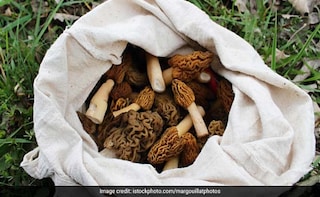We've heard stories of certain ingredients like the black pepper or the common salt found in every household today to be as expensive as gold back in day and even bartered for trade. India showcases a diversity of indigenous ingredients and not many of them may pinch your pocket. At the same time, it also boasts of luxury foods like the Kashmiri saffron or premium quality Darjeeling tea sought after all over the globe and can cost you a fortune. One such expensive and exclusive ingredient that grows wild on the foothills of Himalayas is the Guchchi mushroom that is priced at anything between Rs. 10,000 to Rs. 30,000 for a kilogram! What makes this mushroom so precious?
Advertisement
Advertisement
For the latest food news, health tips and recipes, like us on Facebook or follow us on Twitter and YouTube.
Advertisement
